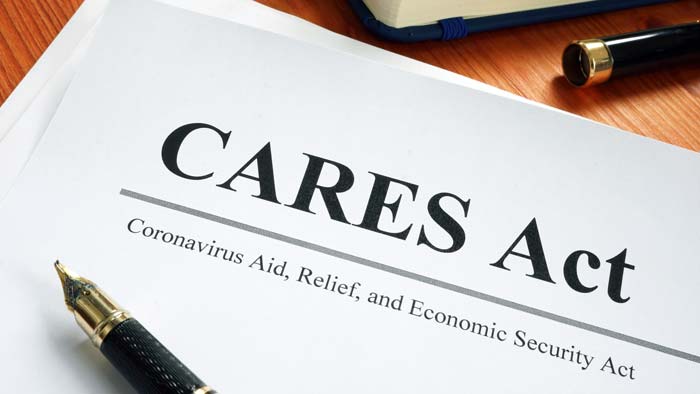
In the last two weeks, state and federal governments passed several pieces of new legislation to address the economic fallout associated with the ongoing spread of COVID-19 (novel coronavirus). This update will focus on aspects of this new legislation that relate to Michigan businesses, including employment related leave and unemployment benefits—specifically, the following:
- Coronavirus Aid, Relief, and Economic Security Act (“CARES Act”) passed by the US Senate on March 25, 2020 and expected to be reviewed in the House of Representatives on Friday, March 27, 2020 before going to President Trump for signature.
- Emergency Paid Sick Leave Act (“Emergency Paid Leave Act”) signed into law by President Trump on March 18, 2020.
- Michigan Governor Gretchen Whitmer’s Executive Order No. 2020-24 for Temporary Expansions in Unemployment Eligibility and Cost-Sharing (“MI UI Benefits Order”) issued with retroactive effect to March 16, 2020.
IMPORTANT: Much is changing daily, and there is very little guidance on how these new laws will be administered and regulated. What follows below are our initial interpretations and related recommendations, all of which are for information purposes only. If you have more detailed questions about your specific situation, please contact us directly.
Initial Observations
The clear intent of the CARES Act is to incentivize employers to maintain employees on their payrolls and keep their businesses open. Whether a business decides to do this or not will impact the applicability of these aid programs.
For example, if a business chooses to continue to pay wages during a government mandated shutdown, those employees would not be eligible for paid leave or unemployment benefits. Conversely, if a business chooses not to continue to pay employees, it likely cannot take advantage of many of the CARES Act provisions and must instead rely on the unemployment program benefits.
Based on our initial review of these provisions, we believe all businesses should initially evaluate whether it makes sense to continue to pay their employees because the CARES Act appears to provide broad incentives to do so. If a business is unable to pay employees for more than a short period or if the business is facing the prospect of not being able to reopen at all, then taking advantage of the emergency leave and unemployment provisions may make more sense.
Summary of Relevant Provisions of the CARES Act
The CARES Act is the US Government’s $2 trillion coronavirus stimulus package and is detailed in approximately 800 pages of legislation. If you would like a copy, please let us know.
There are several programs to assist individuals and businesses. Participants may not be eligible for all programs, and certain programs, if utilized, may be utilized to the exclusion of others.
Below are what we believe to be the key provisions of immediate concern to most businesses. In this update we will not highlight portions of the Act that provide incentives to individuals.
Employee Retention Tax Credit
The Employee Retention Tax Credit provides a refundable payroll tax credit for 50% of wages paid by employers to employees while subject to closure due to coronavirus. Key provisions are:
- The credit is available to employers whose: (i) operations were fully or partially suspended, due to a coronavirus-related shut-down order (i.e. Michigan’s Stay at Home Order); or (ii) gross receipts declined by more than 50% when compared to the same quarter in the prior year.
- For employers with greater than 100 full-time employees, qualified wages are wages paid to employees when they are not providing services due to the coronavirus-related circumstances described above.
- For eligible employers with 100 or fewer full-time employees, all employee wages qualify for the credit, whether the employer is open for business or subject to a shut-down order.
- The credit is provided for the first $10,000 of compensation, including health benefits, paid to an eligible employee. The credit is provided for wages paid or incurred from March 13, 2020 through December 31, 2020.
Delay of Payment of Employer Payroll Taxes
- Employers can defer payment of the employer share of the Social Security tax.
- The deferred employment tax would be paid over the following two years, with half of the amount required to be paid by December 31, 2021 and the other half by December 31, 2022.
Paycheck Protection Program
The Paycheck Protection Program will provide $350 billion to fund up to 8 weeks of cash flow assistance through 100% federally guaranteed loans to small businesses and 501(c)(3) nonprofit organizations.
To help bring back workers who may have already been laid off, the program can be retroactive to February 15, 2020. The availability of credit from other sources does not matter (the program removes certain alternative source and undue hardship tests) and no collateral, or personal guarantee, shall be required for the covered loan.
If the loan is used for qualified expenditures, the loan will ultimately be forgiven and not require repayment. Subject to some limitations, qualified expenditures include:
- The sum of payments of any compensation with respect to employees that is a salary or wage, including payment of cash tips or an equivalent
- Payment for vacation, parental, family, medical, or sick leave
- Severance payments
- Payment required for the provisioning of group health care benefits, including insurance premiums
- Payment of any retirement benefit
- Payment of State or local tax assessed on the compensation of employees
- Payments of interest on a mortgage obligation
- Payment of rent obligations
- Utility payments
Are There Limitations on the Paycheck Protection Program Loan Amount?
Yes. The maximum loan amount must be the lesser of two and a half months payroll or $10,000,000.
Two and a half months payroll is calculated by taking the average total monthly payments by the business for payroll costs incurred during the 1-year period before the date on which the loan is made. For a seasonal employer, the business calculates the average total monthly payments for payroll during the 12-week period beginning February 15, 2019, or at the choice of the business, March 1, 2019, and ending June 30, 2019. This number is then multiplied by 2.5.
Not all payroll qualifies. The loan calculation excludes any salaries above $100,000 per year and any qualified sick leave wages for which a tax credit is allowed under the Emergency Medical Sick Leave Act or the Emergency Family Medical Leave Act, both of which are briefly outlined below.
Is My Business Eligible for the Paycheck Protection Program?
Only small businesses that employ less than 500 employees are eligible for the Paycheck Protection Program. There are some exceptions.
For example, restaurants, foodservice, caterers, and hotels that employ not more than 500 employees per physical location of the business are also eligible to receive a single loan if they operate under the North American Industry Classification System code beginning with 72 (Accommodation and Food Services – U.S. Census Bureau).
Other Incentives
- $17 billion is earmarked to cover up to 6 months of payments for small businesses who currently have Small Business Administration Loans.
- Limitations on net operating losses will be relaxed.
- The amount of interest expense businesses are allowed to deduct is increased from 30% to 50% of EBITDA for tax years beginning in 2019 and 2020.
- Corporate AMT credits are treated as refundable for 2018 onward.
- Businesses will be able to immediately write off costs associated with improving facilities instead of having to depreciate those improvements over the 39-year life of the building.
The Bottom Line
Once it becomes law, the CARES Act should provide some form of assistance to virtually any business negatively impacted by the Coronavirus Pandemic. You should consult with our firm and your tax advisors before making any final determinations since some programs may provide better benefits for your particular needs than others.
Summary of the Emergency Paid Sick Leave Act and the Emergency Family Medical Leave Act
The Emergency Paid Sick Leave Act (“EPSLA”) provides up to two weeks (80 hours) of fully paid time off (capped at $511 per day) to employees unable to work due to COVID-19. The Act also provides for up to two weeks (80 hours) of paid time off at 2/3 of the employee’s rate of pay (capped at $200 per day) to employees caring for others as a result of COVID-19.
The Emergency Family Medical Leave Act (“EFMLA”) provides for up to 12 weeks of two-thirds paid emergency leave (capped at $200 per day) to employees caring for children that are at home due to a COVID-19 closure of their school or child care facility which means it could apply to most children in Michigan.
The Bottom Line
The EPSLA and the EFMLA were put in place before Michigan’s Stay at Home Order was issued. They do not apply to the many employees who are out of work as part of a group layoff or group unpaid leave due to a loss of business or office/plant closure, even though those events were caused by the financial effects of the Coronavirus Pandemic. For this reason, we do not believe the Stay at Home Order triggers an employer obligation under either of these Acts, and we have therefore limited our analysis of them at this time.
For employees out of work due to the Stay at Home Order, those employees should qualify for enhanced unemployment insurance benefits, and employers who continue to pay them should qualify under one of the CARES Act programs outlined above.
Summary of the MI UI Benefits Order
The MI UI Benefits Order issued by Governor Whitmer on March 25, 2020 expands and clarifies the expansion of Michigan Unemployment Benefits previously identified by Governor Whitmer in Executive Order 2020-10 on March 16, 2020.
What Does the MI UI Benefits Order Mean for My Employees?
The Order expands unemployment benefits to the following classes of workers:
- Workers who are sick, quarantined, or immunocompromised and who do not have access to paid family and medical leave or are laid off
- Workers who have an unanticipated family care responsibility, including those who have childcare responsibilities due to school closures, or those who are forced to care for loved ones who become ill and who do not have access to paid family and medical leave or are laid off
- Individuals working in the public health community who become ill or are quarantined due to exposure to COVID-19 and who do not have access to paid family and medical leave or are laid off
The Order also extends access to benefits for unemployed workers:
- Benefits will be increased from 20 to 26 weeks. Anyone with an active unemployment claim can also receive up to a six-week benefit extension.
- The application eligibility period will be increased from 14 to 28 days.
- Suspends the requirement for an individual seeking unemployment to request a registration and work search waiver from their employer
What Does the MI UI Benefits Order Mean for Me as an Employer?
An employer or employing unit must not be charged for unemployment benefits if their employees become unemployed because of an executive order requiring them to close or limit operations. Any benefit paid to a claimant that is laid off or placed on a leave of absence will not be charged to the employer’s accounts, but instead will be pooled and assumed by the Nonchargeable Benefits Component of employer accounts. Employers who unlawfully misclassify their workers and have underpaid their unemployment tax do not get the benefit of this enhanced cost-sharing.
The Order also expands the Michigan’s Work Share program. Employers are encouraged to implement the program that permits employers to maintain business operations during declines in regular activity instead of laying off workers.
To view the State of Michigan’s guidance for employers contemplating potential layoffs, visit here.
The Bottom Line
The CARES Act appears to provide many incentives to employers to keep employees paid. Therefore, any decision to not pay employees, and thus make them eligible for unemployment benefits, should be carefully considered.
If an employer ultimately chooses to not pay employees (or simply cannot afford to) during any shutdown, or terminates employees as a result of COVID-19 and the Governor’s Stay at Home Order, any resulting unemployment claims will not be chargeable to your employer account. Such employers should encourage all employees who have been laid off or terminated as a result of this situation to file claims following the expiration of any other paid benefits their employer provides.
Claims in Michigan have surged by more than 2,000%. Employees should be encouraged to apply online during off peak hours (8pm to 8am).
IMPORTANT: As stated at the outset, much is changing daily, and there is currently very little guidance on how these new laws will be administered and regulated. This update contains our initial interpretations and related recommendations, all of which are for information purposes only. If you have more detailed questions about your specific situation, please contact one of our attorneys directly.
Contact Us
Our lawyers in Grand Rapids, MI, would be more than happy to help with your case! Call Schnelker, Rassi & McConnell, PLC at (616) 828-1195 to set up a meeting with one of our trusted attorneys.


